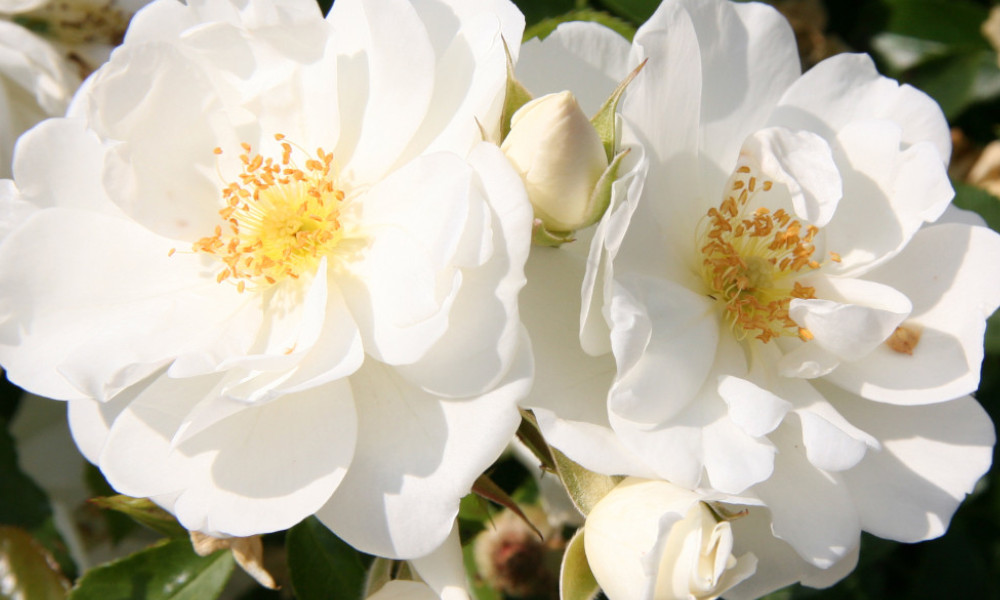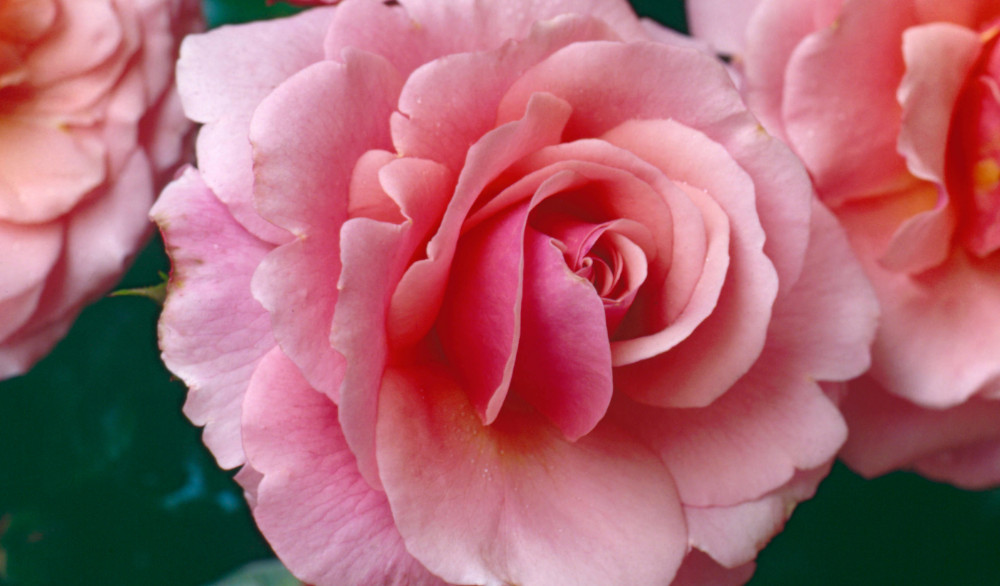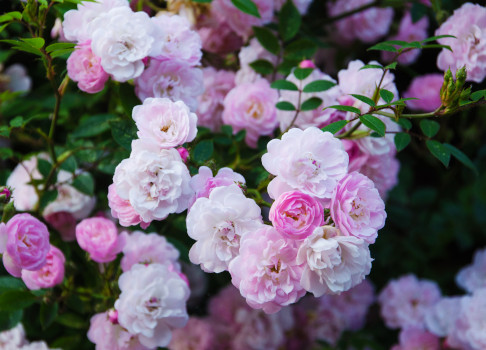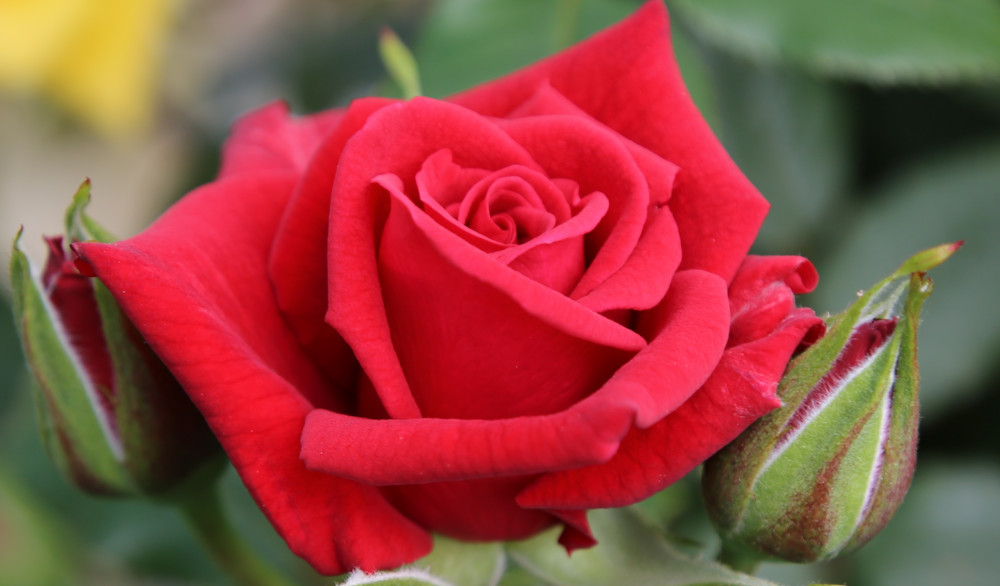How to Care for Roses in Autumn & Winter
How to Care for Roses in Autumn & Winter

Roses are a garden favourite – there is so much to love about them; the blooms, the scent and the knowledge that there is a rose for pretty much every spot in the garden. To keep the roses in tip top condition there are a few things to help them in their dormant season for the best summer showing.
Deadheading
From late summer into early autumn many roses have a late flourish of flowers – to maintain their blooms for as long as possible it is important to deadhead correctly. A pair of clean secateurs are important so that you can cut the spent flower stem back down to a leaf with five leaflets. This encourages the rose to strengthen the stem and gives more energy to the other flowers.


Pruning
The main cold season job for roses is pruning and while it may seem arduous and complicated at first it really isn’t when you follow these straight forward premises.
Autumn Pruning: If your garden is exposed to windy conditions then it is advisable to give the roses an early prune to reduce the damage potentially caused by ‘wind rock’. Removing approximately a third of the height will be enough to stop the rose being affected. Wind rock – as the name suggests, rocks the plant and can loosen the roots in the ground, causing damage to both the roots and future growth.
The main pruning of roses should be undertaken in January or February – when the weather will be starting to heat up again rather than getting colder. This pruning will stimulate growth for the upcoming spring and summer.
Shrub Roses
If your rose is young – less than two years old - then pruning should be to cut the plant back to about 30cm above the ground. If the rose in question is more than two years old, then the rose should be reduced by half and all foliage removed. Once the pruning to size is done, look for signs of what are known as ‘the three D’s’ - dead, diseased or damaged areas of the plant. Inspect the rose for any evidence of these and cut that part of the plant out. Also, in areas where branches cross each other, one should be removed to take away the risk of rubbing together and becoming damaged or diseased. Any diseased prunings should be disposed of in the garden waste as opposed to the compost heap to prevent re-infection.
Standard roses should be pruned in the same way as a shrub rose and, if any shoots appear on the main trunk - cut them right back. Occasionally ‘suckers’ can appear at the base of the standard trunk, these are usually fast growing shoots with little to no thorns - these should also be cut back as far as possible.
Climbers and Ramblers
Like shrub roses the pruning is less aggressive for young, climbing roses - they only need pruning back by a couple of inches just to stimulate new growth. More mature climbing roses should, by contrast, have the previous season’s growth cut back to a couple of inches from the main stem. Rambling roses need minimal pruning and should just have their shoots thinned out as necessary to maintain the required height and spread.
It is also worthwhile to mention here that, as many roses can be susceptible to disease, you should always use clean, disinfected equipment to prune - this can really help to mitigate the risk of cross infection. Secateurs and loppers should be cleaned with a brush or wire wool and a product such as WD40 to remove residual grime before drying with a cloth. To disinfect the tools - spray them with a strong disinfectant, leave for around half an hour then wipe off the excess solution. If you do this after pruning, then your tools are ready to be used again next season.

Planting
Roses can be planted at any time of year – in fact autumn and winter can be an ideal time as this will increase the possibility of flowers during the plant’s first year. Bare root roses are often available from late autumn and often provide a more affordable alternative to potted roses. As long as the ground is not frozen or waterlogged then it will be fine to plant any rose.
Mulching
Ideally the best time to apply mulch to the roses is early spring. However - if your roses were not mulched previously, or if all the mulch has disappeared by autumn - it is probably worth giving the roses mulch in late autumn. Make sure the ground is clear of debris, such as leaves, and apply the mulch around the base of the rose in a thick layer of around 5-10cm. Well-rotted manure, soil improver, leaf mould or compost are all ideal.

Hard Wood Cuttings
Late autumn and winter is also the time to take hard wood cuttings from your favourite roses. Propagating cuttings will give you a clone of the parent plant – this is ideal if you have a particularly lovely rose or one which is old and needs reinvigorating. Taking a cutting or two acts as insurance – just in case the unthinkable happens and will result in extra plants for your garden. Hardwood cuttings take a while to get going although they have good success rates so are well worth giving a try.
Prepare a plant pot (a 9cm pot is fine for one cutting) with multipurpose compost. On the parent rose select a healthy stem, about 8 inches long with at least two buds at each end of the cutting. One bud will provide the leaves while the lower bud will become roots in the soil. Take the cutting cleanly by making a slanted cut above the top bud and another at the bottom, then remove any leaves. Place the cutting vertically into the soil, leaving a couple of inches protruding out of the soil at the top, water the pot then label and store for the winter – against a house wall is best although a greenhouse is fine providing you remember to water every couple of weeks. Check the cuttings in the spring and if the stems are still green and new leaves have started to grow then they have been successful and can be planted in their new position from late May – early June. You can even select your cuttings as part of the pruning in regime as they will come from parts of the plant which were due to be discarded anyway. Just make sure you choose healthy growth only.

